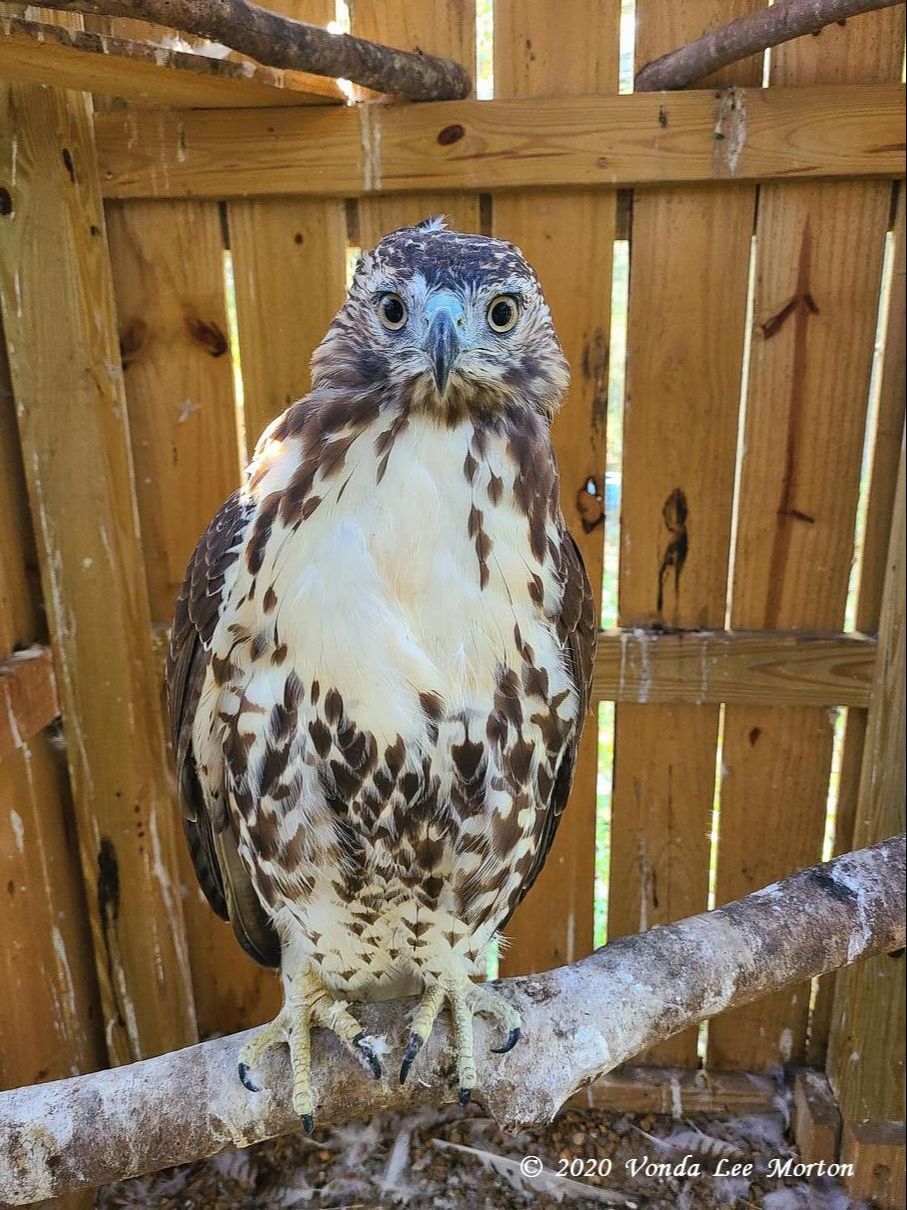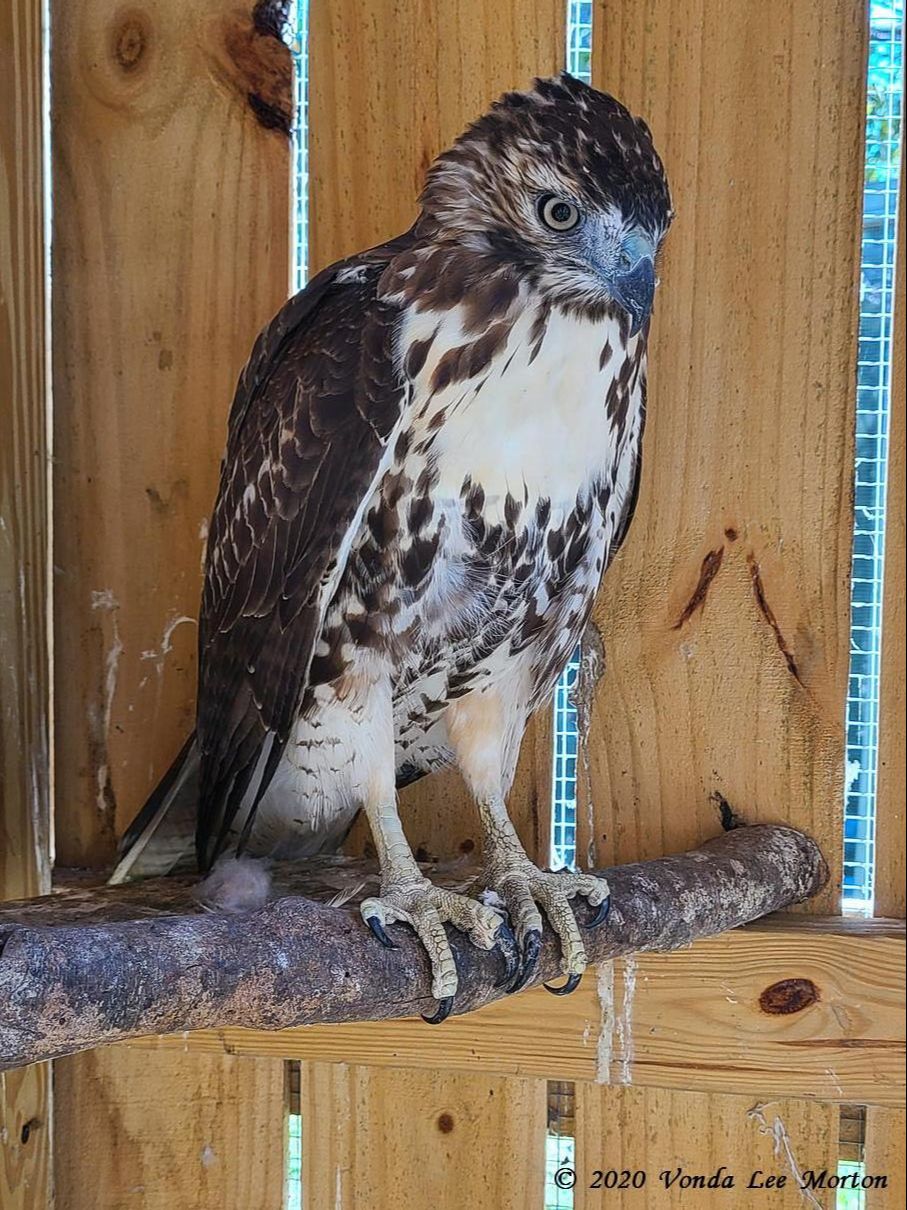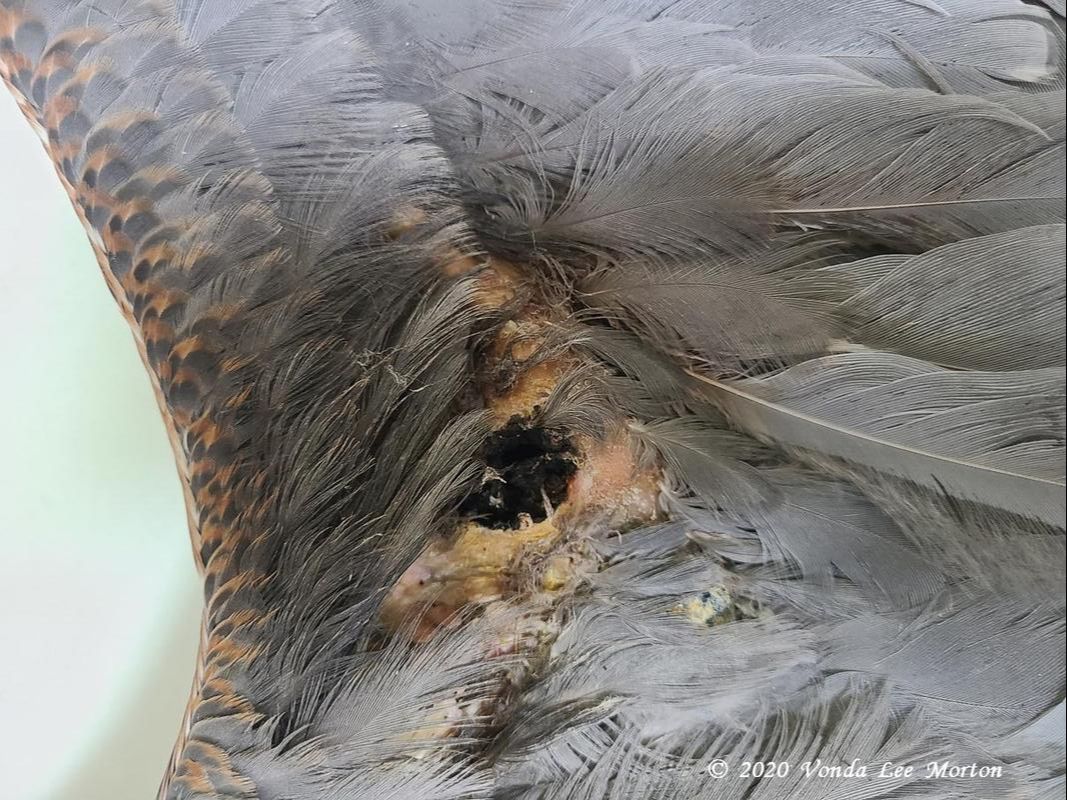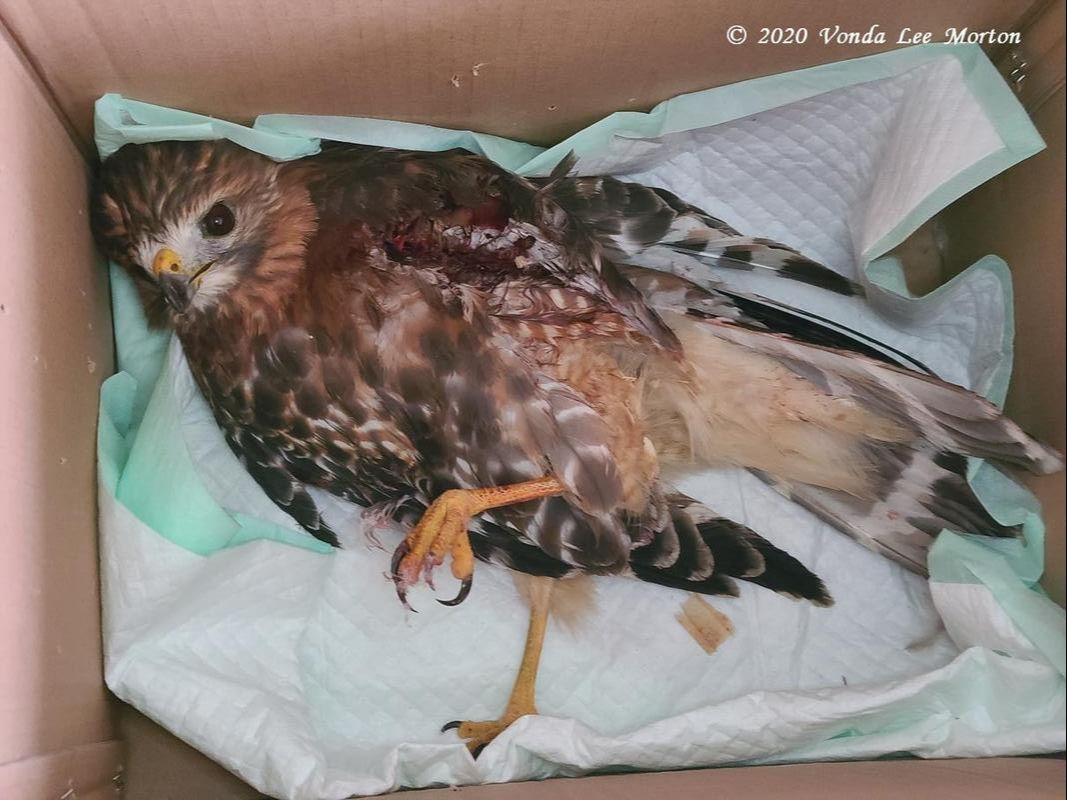The loopy red tail went into the mini-pen again early Monday, October 19, and once he proved he was able to perch properly there, he was moved to the raptor flight. He’s flying beautifully when he wants to but spends a lot of time on the ground. The weather hasn’t been conducive for a release and frankly, I’ve not been comfortable with a release yet anyway. He needs fattening up a bit more and I need to see him perching more and not just sitting on the ground. The first part, he’s definitely on board with—he’s a young, food-aggressive bird. The second part—well, I know he CAN perch but he goes to the ground every time I walk into the raptor flight to feed him. He’ll be a guest at LWR for a while longer.
|
No complaints here on a slower period; the downtime is always nice! The loopy red tail went into the mini-pen again early Monday, October 19, and once he proved he was able to perch properly there, he was moved to the raptor flight. He’s flying beautifully when he wants to but spends a lot of time on the ground. The weather hasn’t been conducive for a release and frankly, I’ve not been comfortable with a release yet anyway. He needs fattening up a bit more and I need to see him perching more and not just sitting on the ground. The first part, he’s definitely on board with—he’s a young, food-aggressive bird. The second part—well, I know he CAN perch but he goes to the ground every time I walk into the raptor flight to feed him. He’ll be a guest at LWR for a while longer. The great blue heron with the voracious appetite required euthanasia due to necrotic tissue around the wound site where the hook had been embedded. His x-rays were again clear—no fractures—but between the very large area of tissue that had died despite the bird receiving antibiotics and the pronounced wing droop, vet Peggy Hobby and I agreed his chances for release were nonexistent and his life as an educational bird would be pain-filled due to that drooping wing. An adult great-horned owl came in with no apparent injuries but he was lethargic and the inside of his mouth was pale white. I suspected internal bleeding, and sure enough, he died within hours of intake. Early this morning a caller reported finding a hawk by the roadside late Saturday evening, with what he believed was a broken wing. When the hawk, an adult red shoulder, arrived at LWR, it was immediately obvious the left wing was trashed; basically, it was held to the body with skin and tendons, as the bones near the shoulder were broken and protruding from the skin. The bird was humanely euthanized. Sadly, late fall into early winter is the peak period for rehabbers to see birds that cannot be saved. There are always adults and juvies who come in year-round with fatal injuries, of course, but during baby season they’re somewhat balanced out by the intake of hatchlings, nestlings and fledglings who usually require little more than a steady food supply and being taught to fend for themselves. With no babies coming in, it sometimes seems as if late fall-early winter is one long stretch of euthanasias. It is indeed a slower period for rehabbers, but it can also be the most emotionally trying because so very many of the birds we see during these months can only be “helped” by a humane end to their suffering.
4 Comments
Pam
11/1/2020 07:28:51 pm
Overboard? There's no such thing as too many photos of a gorgeous young red tail. Sending best wishes to him and to you, too. Sorry to hear about the losses.
Reply
Laurens Wildlife Rescue
11/8/2020 04:25:32 pm
Thanks Pam!
Reply
Ann Feldman
11/2/2020 11:39:03 am
The euthanasias make me sad, but thank God you and others are around to do them. PS...I think you have a pet Red-tail. ( I think he's faking.)
Reply
Laurens Wildlife Rescue
11/8/2020 04:26:42 pm
LOL, Ann, I honestly think he'd make a great falconry bird.
Reply
Your comment will be posted after it is approved.
Leave a Reply. |
Archives
April 2023
Categories
All
|












 RSS Feed
RSS Feed
